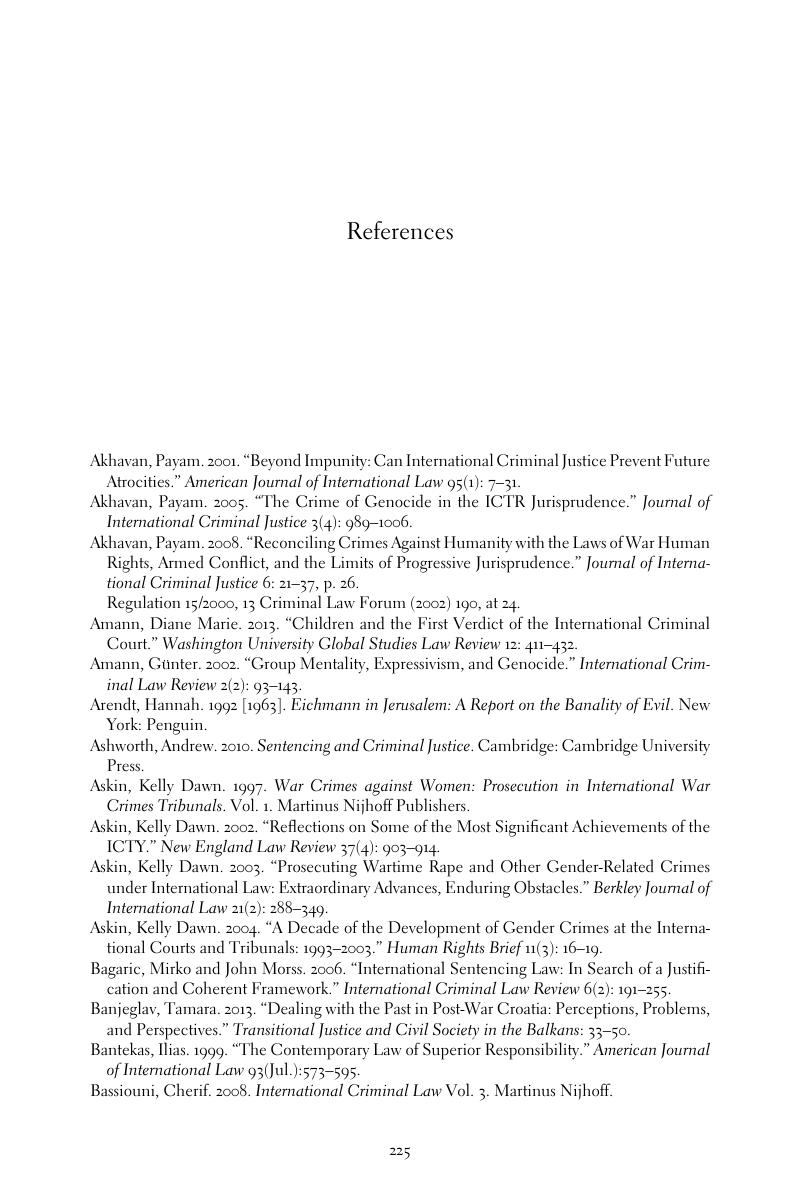Book contents
- Judgment Day
- Judgment Day
- Copyright page
- Contents
- Tables
- Acknowledgments
- 1 Judgment Day at the Tribunal
- 2 A Theory of International Tribunal Judges as Judicial Entrepreneurs
- 3 Analyzing the Progressive Development of International Law
- 4 The Expressive Function of Judgments
- 5 Punishing the Guilty
- 6 Conclusions
- Appendix Expressive quotes
- References
- Index
- References
References
Published online by Cambridge University Press: 30 June 2017
- Judgment Day
- Judgment Day
- Copyright page
- Contents
- Tables
- Acknowledgments
- 1 Judgment Day at the Tribunal
- 2 A Theory of International Tribunal Judges as Judicial Entrepreneurs
- 3 Analyzing the Progressive Development of International Law
- 4 The Expressive Function of Judgments
- 5 Punishing the Guilty
- 6 Conclusions
- Appendix Expressive quotes
- References
- Index
- References
Summary

- Type
- Chapter
- Information
- Judgment DayJudicial Decision Making at the International Criminal Tribunals, pp. 225 - 234Publisher: Cambridge University PressPrint publication year: 2017



